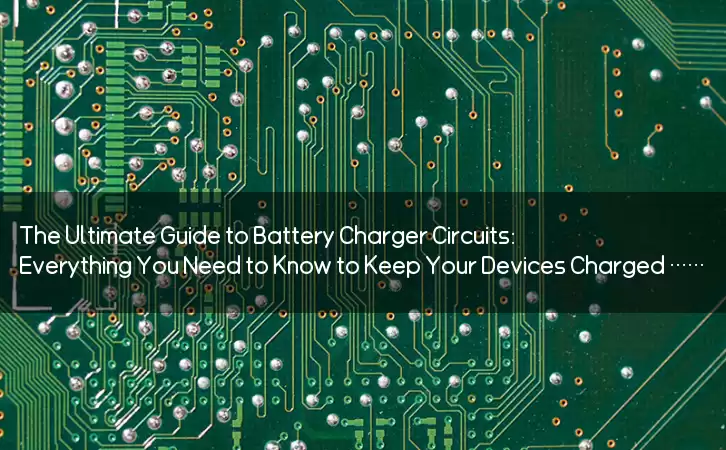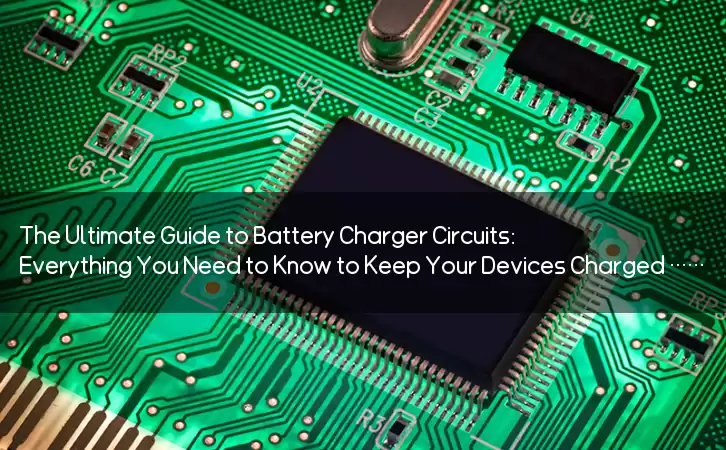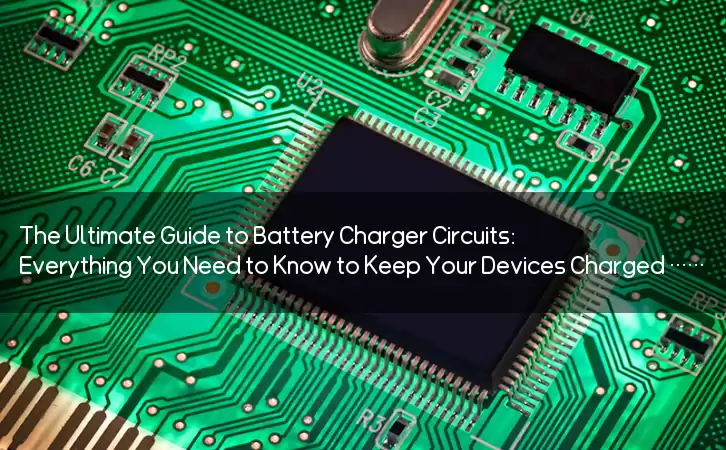Information Center
The Ultimate Guide to Battery Charger Circuits: Everything You Need to Know to Keep Your Devices Charged and Healthy
Published:2023-08-09 00:38:41 Author:Green WCND Views:66Battery Charger Circuit: A Comprehensive Guide

Battery chargers are one of the most essential electronic devices that we use in our daily lives. They are used to keep our batteries running and ensure that our devices are always charged and ready to use. A good battery charger is not only efficient, but it should also be safe and easy to use.

In this article, we will discuss the various aspects of battery chargers and the important components that make up a battery charger circuit.

Types of Battery Chargers
The type of battery charger you need depends on the type of battery you have. There are several types of batteries available in the market, and different types of batteries require different charging techniques.
1. Lead-Acid Battery Charger
Lead-acid batteries are commonly used in vehicles and power backup systems. Lead-acid batteries need to be charged in a controlled manner to prevent damage. A lead-acid battery charger is designed to provide a constant voltage and current to the battery during the charging process.
2. Lithium-Ion Battery Charger
Lithium-ion batteries are commonly used in mobile phones and other portable devices. A lithium-ion battery charger uses a constant current and voltage during the charging process. It is important to keep the voltage and current levels within a safe and controlled range to prevent damage to the battery.
3. NiMH and NiCad Battery Chargers
NiCad and NiMH batteries are commonly used in battery-operated devices. NiCad and NiMH battery chargers use a constant current during the charging process. These battery chargers can also be designed to detect when the battery is fully charged and turn off automatically.
Components of a Battery Charger Circuit
1. Transformer
The transformer is used to step down the high voltage AC input to a lower voltage AC output. The transformer also isolates the device from the high voltage power source.
2. Bridge Rectifier
The bridge rectifier is used to convert the AC voltage to DC voltage. The bridge rectifier is made up of four diodes that allow current to flow in only one direction.
3. Capacitor
The capacitor is used to filter the DC voltage and remove any ripples from the output.
4. Voltage Regulator
The voltage regulator is used to regulate the output voltage from the charger circuit. The voltage regulator ensures that the output voltage remains constant even if the input voltage fluctuates.
5. Current Limiting Circuit
The current limiting circuit is used to limit the current flowing through the battery during the charging process. This circuit ensures that the battery does not become overcharged and damaged.
6. Battery Connection
The battery connection is the terminal where the battery is connected to the charger circuit. This connection should be made securely to prevent any short circuits and damage to the battery.
Conclusion
A good battery charger circuit should be efficient, safe, and easy to use. It should incorporate all the necessary components to ensure that the battery is charged in a controlled and safe manner. By understanding the various types of battery chargers and the components of a battery charger circuit, you can choose the right charger for your battery and ensure that it lasts long and performs well.
Power Adapter Design and Customization Guide for Portable Electric KettlesI. Common Design Types for Portable Electric Kettle Power AdaptersPortable electric ke···
I. Common Design Types of Power Adapters External Independent Type (Most Common) Design: A standalone adapter (e.g., "black brick") connected to the p···
Handheld Vacuum Cleaner Power Adapter Selection GuideIntroductionHandheld vacuum cleaners have become a mainstream tool for household cleaning due to their port···
Drill Power Adapter Selection Guide.drill-container { font-family: Arial, sans-serif; line-height: 1.6; max-width: 800px; margin: 0 auto; padding: 20px; } .dril···





